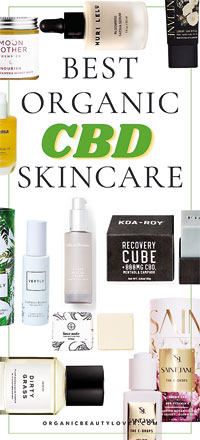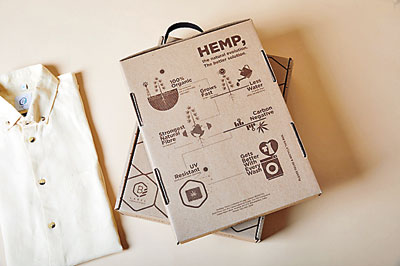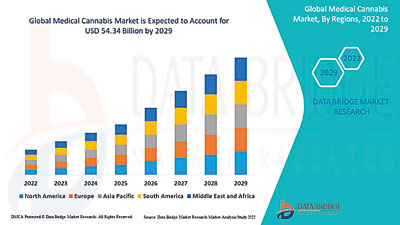Global Branding Opportunities Sri Lanka Lost – part iii
View(s): In the previous two articles, attention was drawn to the lost opportunities due to branding failures. Today’s article highlights the failures that have occurred due to misdirection and misguiding given by the British who ruled the country to promote tobacco products and also make sure that they could promote the pharmaceutical industry in Sri Lanka. Ancient people put cannabis leaves and hot stones in a brazier and used to inhale the resulting smoke. As we call it cannabis, and as we keep debating over the fact that it should remain an illegal drug, many developed countries in the world are making the best out of it. Historic records say a king called Ravana who ruled Sri Lanka around 10,000 BC used hemp for medical purposes. In 341 AD King Buddadasa wrote a medical pharmacopeia; Sarartha Sangrahaya in which the medicinal values of Cannabis were described. Since then medical books described Cannabis as an important herbal ingredient. Do these books include Yogarnavaya and Prayagorathnavaliya (1232), Vaidyacintamani, a wish-fulfilling gem of Medicine (1707), Glossary of Synonyms of Medicinal Plants (1798), Yogasekaraya (1894), Kolavidiya (1900), Es Veda Potha (Opthalmic treatments) (1908). Cannabis was historically traded by the Arabs along the southern Silk Trade Route as early as the 13th century.
In the previous two articles, attention was drawn to the lost opportunities due to branding failures. Today’s article highlights the failures that have occurred due to misdirection and misguiding given by the British who ruled the country to promote tobacco products and also make sure that they could promote the pharmaceutical industry in Sri Lanka. Ancient people put cannabis leaves and hot stones in a brazier and used to inhale the resulting smoke. As we call it cannabis, and as we keep debating over the fact that it should remain an illegal drug, many developed countries in the world are making the best out of it. Historic records say a king called Ravana who ruled Sri Lanka around 10,000 BC used hemp for medical purposes. In 341 AD King Buddadasa wrote a medical pharmacopeia; Sarartha Sangrahaya in which the medicinal values of Cannabis were described. Since then medical books described Cannabis as an important herbal ingredient. Do these books include Yogarnavaya and Prayagorathnavaliya (1232), Vaidyacintamani, a wish-fulfilling gem of Medicine (1707), Glossary of Synonyms of Medicinal Plants (1798), Yogasekaraya (1894), Kolavidiya (1900), Es Veda Potha (Opthalmic treatments) (1908). Cannabis was historically traded by the Arabs along the southern Silk Trade Route as early as the 13th century.
Cannabis was historically traded by the Arabs along the southern Silk Trade Route as early as the 13th century. Hemp was found in Sri Lanka at least as early as the 17th Century according to sources. The Colonial Dutch criminalized narcotic trafficking in 1675, though by 1860, long after the island fell under British control, cannabis was widely produced throughout the island and the country formed the production line for the opium that was exported to China. In 1867, the British colonial government introduced the Opium and Bhang Ordinance, restricting the sale of cannabis to licensed dealers only. In 1897, the import of bhang or ganja was banned. In 1905, the British colonial government introduced the Indian Hemp Ordinance, which in its 1907 version punished` producing, importing, or distributing “Indian hemp” to a 100-rupee fine and up to six months’ imprisonment.
 The Poisons, Opium, and Dangerous Drugs Ordinance of 1935 criminalised cannabis. However, it’s noteworthy that India has already entered the Hemp-based cosmetics market successfully, However, the effort behind this article is not to promote the individual consumption of hemp as smoking anything is not going to do any good to our lungs. This effort is to open a debate on the potential that is untapped as a country to cater to a USD50bn market in the future and to draw the attention of the officials to make necessary actions to being work so that we can at least now enter the market as a bulk supplier initially and then by attracting investors to invest in mainly three areas where the value additions come in; Fabrics, medicine, and personal care products. Hemp Oil Market was valued at $ 82.45 million in 2021 and is predicted to reach $ 1,253.51 million by 2026, developing with a CAGR of 38.2% from 2021 to 2027. The global hemp-derived CBD oil market size was valued at USD 1306.07 USD million in 2021. It is expected to reach USD 6536.64 million by 2030.
The Poisons, Opium, and Dangerous Drugs Ordinance of 1935 criminalised cannabis. However, it’s noteworthy that India has already entered the Hemp-based cosmetics market successfully, However, the effort behind this article is not to promote the individual consumption of hemp as smoking anything is not going to do any good to our lungs. This effort is to open a debate on the potential that is untapped as a country to cater to a USD50bn market in the future and to draw the attention of the officials to make necessary actions to being work so that we can at least now enter the market as a bulk supplier initially and then by attracting investors to invest in mainly three areas where the value additions come in; Fabrics, medicine, and personal care products. Hemp Oil Market was valued at $ 82.45 million in 2021 and is predicted to reach $ 1,253.51 million by 2026, developing with a CAGR of 38.2% from 2021 to 2027. The global hemp-derived CBD oil market size was valued at USD 1306.07 USD million in 2021. It is expected to reach USD 6536.64 million by 2030.
What is the competitive advantage Sri Lanka has?
As a country in the tropical climatic belt, Sri Lanka is the only country in the world to sell King Coconut to the world. Sri Lanka also produces the best cinnamon and the best tea in the world. There is no doubt that Sri Lanka can produce the best cannabis that can be utilized in the production of medicines and cosmetics. Hemp fiber will be a by-product that can bring revenues to Sri Lanka. Let’s look at how big these three opportunities are to Sri Lanka.
Hemp Fiber Market – The global hemp fiber market size is set to grow by USD 4.28 billion from 2021 to 2026, according to Technavio. In addition, the growth momentum of the market will accelerate at a CAGR of 15.32% during the forecast period. The hemp fiber market is fragmented due to the presence of several global and local vendors. The global hemp fiber market will be driven by factors such as the increasing use of hemp fibers in the textile industry. Hemp fiber is more durable than cotton or synthetic fibers, which makes it more resilient and long-lasting. It is produced in various ways and blended with other complementary yarns. It is lighter and has high insulation qualities when compared to synthetic fibers. Hemp is highly suitable for outdoor wear owing to its features such as resistance to ultraviolet (UV) and mold. It can also be blended with other fibers. These factors will spur the growth of the global hemp fiber market during the forecast period.
Hemp Cosmetics Market – Global Cannabidiol (CBD) Skin Care Market was valued at USD 952.91 million in 2021 and is expected to reach USD 7583.91 million by 2029, registering a CAGR of 29.60% during the forecast period of 2022-2029. The CBD-infused cosmetics market is set to grow by USD 3.07 billion from 2020 to 2025, progressing at a CAGR of 21.42% according to Technavio. 45% of the market›s growth will originate from North America during the forecast period. US and Canada are the key markets for CBD-infused cosmetics in North America. Market growth in this region will be faster than the growth of the market in other regions.
The launch of innovative products, the growing use of online platforms to shop for CBD-infused cosmetics, and the rising awareness and growing adoption of organic cosmetic products will facilitate the CBD-infused cosmetics market growth in North America over the forecast period.
However, the lack of awareness and market penetration in developing countries will be a major challenge for the CBD-infused cosmetics market during the forecast period. CBD-infused cosmetics are common in most developed countries. However, their penetration in developing countries, especially in Tier-2 and Tier-3 cities in these countries, is very low. Also, the market in these countries faces several challenges, such as the lack of knowledge about the latest products and a greater demand for traditional cosmetic products. Furthermore, in developing countries, price consciousness among the people is a major hurdle that restricts the adoption of such premium cosmetic products. Vendors find it difficult to penetrate emerging markets in APAC and Eastern Europe due to the lack of knowledge related to the products offered to people.
Hemp Medical Market – Data Bridge Market Research analyses that the medical cannabis market which was USD 11.0 billion in 2021, would rocket up to USD 54.34 billion by 2029, and is expected to undergo a CAGR of 22.1% during the forecast period 2022 to 2029.
India Hemp and Co is the best example to cite from the region. Founded by sisters with a common love for the mountains and its bounty, India Hemp and Co has three simple but essential cannabis products: hemp seed oil, hemp protein powder, and hemp hearts, along with a pet collection of oils and treats. Sri Lanka is in the stage of “Now or Never”.
The debate should be on how we make it a commercial crop, not something that the youth of Sri Lanka can smoke. It’s evident that we are holding on to the wrong end of the problem which is not even a problem. Therefore, without wasting any more time, the relevant officials should take steps to find investors who can come to Sri Lanka and begin commercial cultivation of hemp if required high-security zone. We have too little time left to waste over debates and arguments. With the value additions, Sri Lanka too can enter the branded cosmetic market and the hemp fabric market sooner than later.
HitAd.lk is the best and biggest mobile phone market in Sri Lanka, and we guarantee you will find what you need here from our extensive listing of mobile phones for sale in Sri Lanka. Whether it’s a budget-priced smartphone for communication, or higher end features with advanced connectivity, there are many different options from which to choose from on our site!


